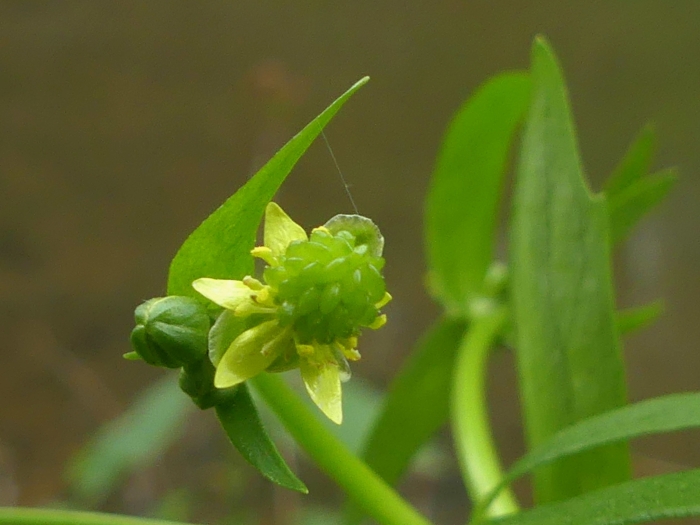Littleleaf Buttercup
(Ranunculus abortivus)
Littleleaf Buttercup (Ranunculus abortivus)
/
/

Allen Browne
Public Domain

















































Estimated Native Range
Summary
Littleleaf Buttercup is valued for its early spring flowers that provide a food source for pollinators when few other plants are in bloom. It is suitable for naturalized areas, woodland gardens, and shaded borders. While it prefers moist, rich soil, it is adaptable to various soil types, provided they have good drainage. It thrives in full sun to part shade. Gardeners should be aware that all parts of the plant are toxic if ingested and can cause skin irritation on contact. There are no significant disease or pest issues, but it can self-seed prolifically, potentially becoming weedy in ideal conditions.CC BY-SA 4.0
Plant Description
- Plant Type: Herb
- Height: 0.5-2 feet
- Width: 0.25-1 feet
- Growth Rate: Moderate
- Flower Color: Yellow
- Flowering Season: Spring
- Leaf Retention: Deciduous
Growth Requirements
- Sun: Full Sun, Part Shade
- Water: Medium
- Drainage: Medium, Slow
Common Uses
Bee Garden, Bird Garden, Butterfly Garden, Deer Resistant, Low Maintenance
Natural Habitat
Moist deciduous woodlands, floodplains, and swamps in the Eastern United States and Southern Canada
Other Names
Common Names: Small-Flower Crowfoot , Early Wood Buttercup , Kidney-Leaved Buttercup , Little-Leaved Buttercup , Small-Flowered Buttercup , Small-Flowered Crowfoot , Smooth-Leaved Buttercup , Early Woodbuttercup , Kidney-Leaf Buttercup , Kidneyleaf Buttercup
Scientific Names: Ranunculus abortivus , Ranunculus abortivus var. acrolasius , Ranunculus abortivus var. abortivus , Ranunculus abortivus subsp. acrolasius , Ranunculus abortivus var. eucyclus , Ranunculus abortivus var. indivisus , Ranunculus abortivus subsp. eucyclus , Ranunculus holmii , Ranunculus abortivus var. typicus , Ranunculus abortivus f. sylvaticus
GBIF Accepted Name: Ranunculus abortivus L.